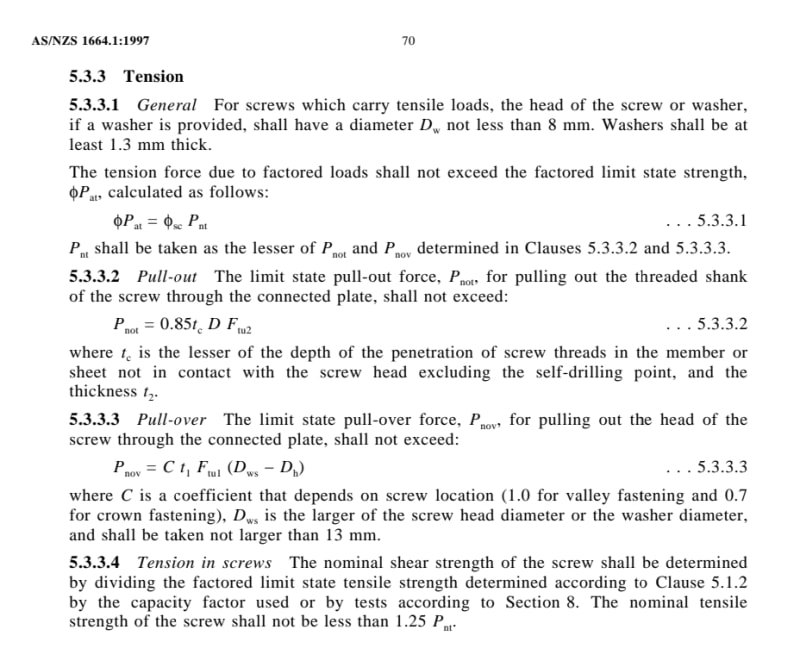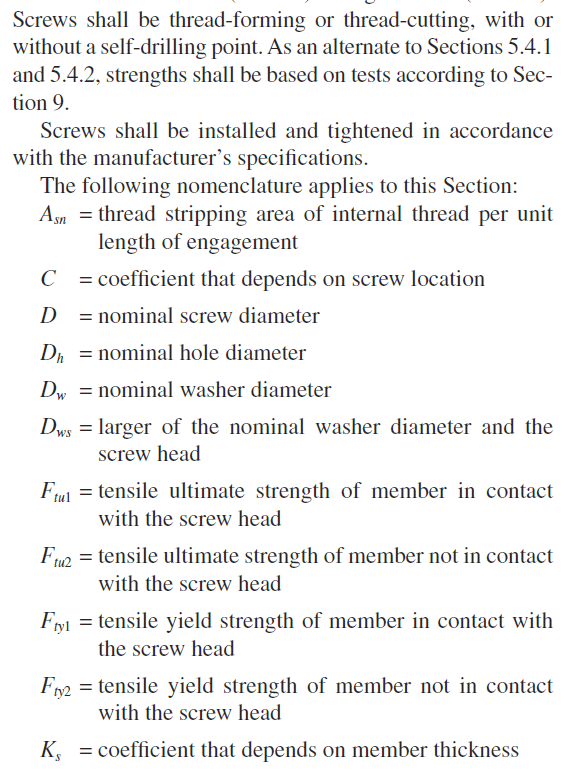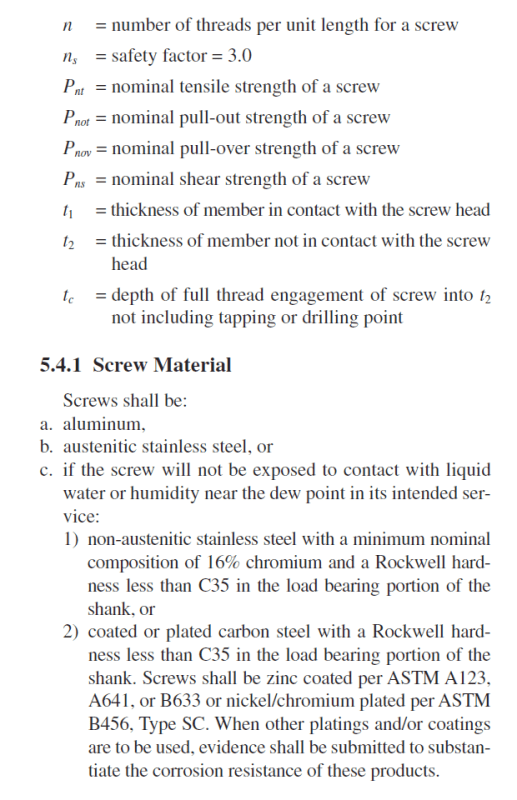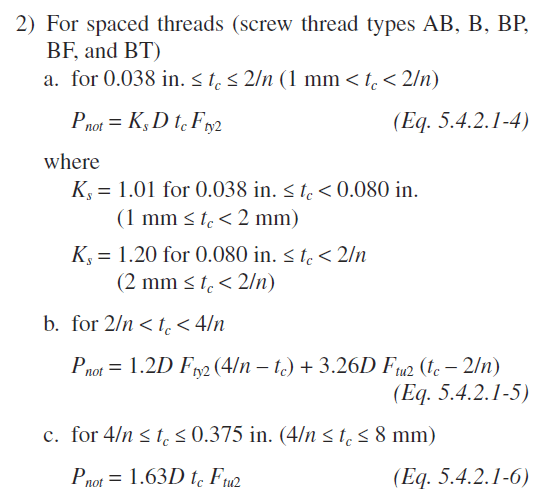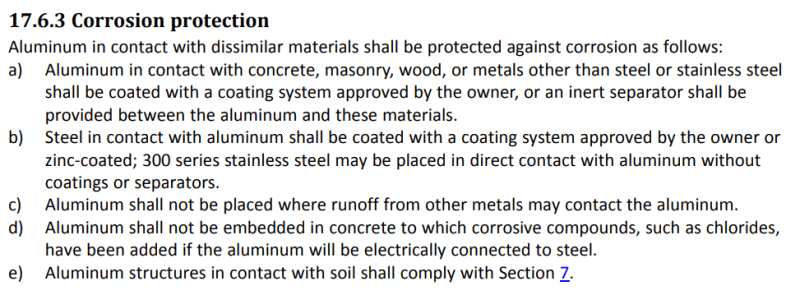Looking at fixing two pieces of aluminum together (aluminum cladding panel into a 4mm thick aluminum batten) with 12Ga self drilling screws. The screw manufacture published test data for pullout and shear data for into 1.6mm thick 450MPa (fu = 480MPa) steel, 2.8kN. The aluminum is approximately 240MPa (fu = 290MPa). Is it reasonable to calculate the pull out capacity of the screw into the aluminum by taking use ratio the yield strength x test data, ie 2.8kN * 290/480 = 1.7kN for a 1.6mm piece of aluminum?
Also can pullout capacity equations in steel members be used for aluminum?
Such as P =pi/4 * (Dmajor2 - Dminor2) * t/p * fu. Where t = material thickness, p = thread pitch, fu = tensile strength, Dmajor = outer thread dia, Dminor = inner thread diameter.
Also can pullout capacity equations in steel members be used for aluminum?
Such as P =pi/4 * (Dmajor2 - Dminor2) * t/p * fu. Where t = material thickness, p = thread pitch, fu = tensile strength, Dmajor = outer thread dia, Dminor = inner thread diameter.

